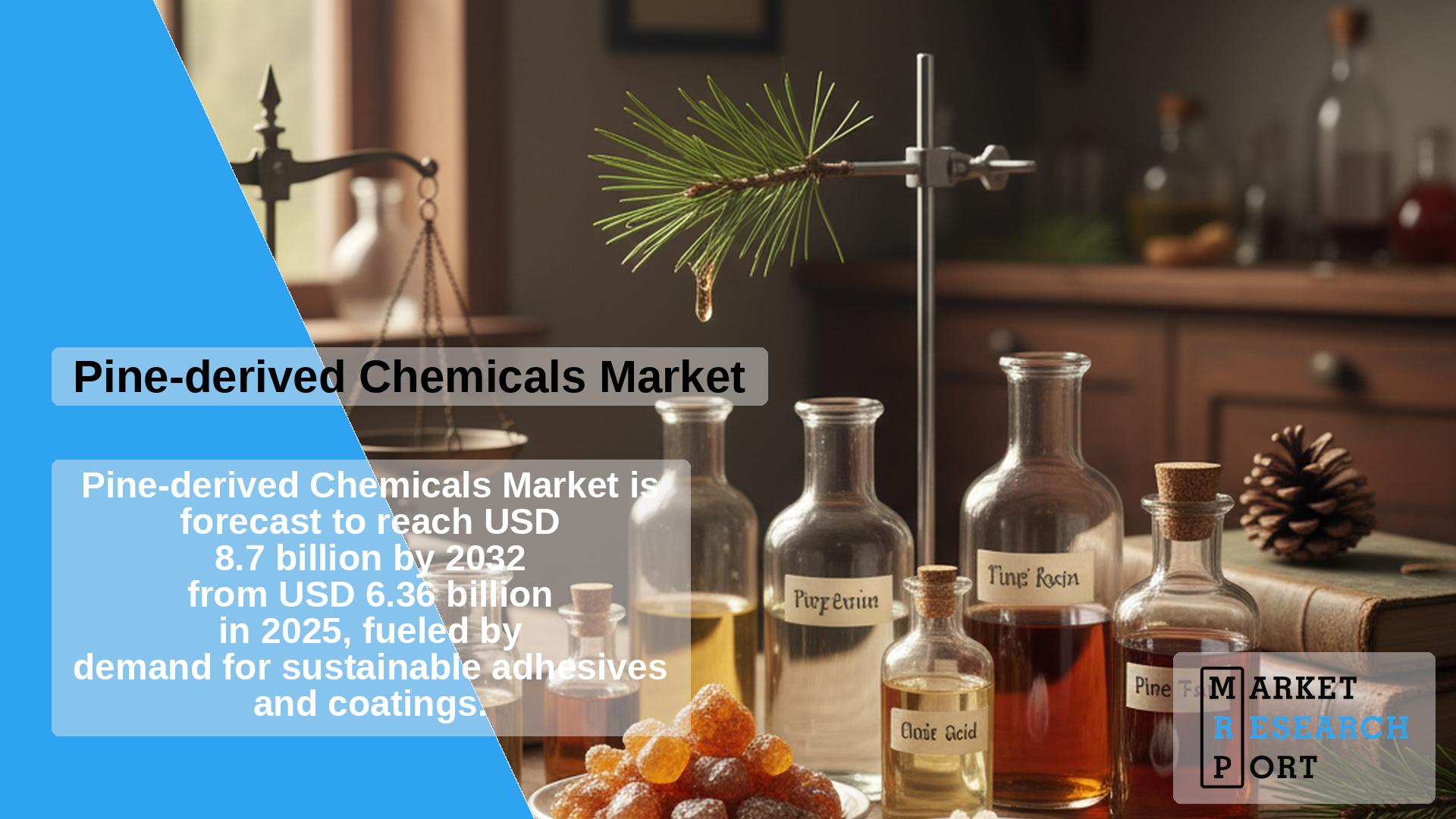
The global pine-derived chemicals market reached an estimated value of USD 6.36 billion in 2025 and is forecasted to climb to around USD 8.7 billion by 2032, expanding at a CAGR of 4.7% during the forecast period. Market growth is fueled by the transition toward bio-based materials, increasing demand for sustainable chemicals, and the adoption of green manufacturing practices across industries such as coatings, adhesives, and pharmaceuticals.
Pine-derived chemicals are natural substances sourced from pine trees and applied across multiple industries such as adhesives, paints, coatings, and surfactants as eco-friendly alternatives to petroleum-based materials. Their biodegradable nature and alignment with environmental objectives are playing a crucial role in the growing interest among manufacturers.
Growing attention toward sustainability and the adoption of renewable resources are significant market drivers. Advancements in extraction and processing technologies have improved production efficiency and minimized waste. Increasing use of pine-derived materials in personal care, pharmaceuticals, and construction sectors also presents notable growth opportunities.
However, challenges persist such as fluctuating raw material prices, limited sources of pine resin, and high production costs. Despite these restraints, continuous research aimed at improving efficiency and diversifying product grades indicates a steady long-term outlook.
The tall oil segment continued its dominance in 2025 with over one-third of the global revenue share. Tall oil’s superior binding properties and environmental compatibility make it indispensable for industrial-grade coatings, sealants, and lubricants. Meanwhile, turpentine, valued for its use in paints, coatings, and pharmaceuticals, is anticipated to grow at a healthy CAGR of 5.1% between 2025 and 2032, fueled by rising demand for bio-based solvents and therapeutic formulations.
The kraft process maintained its top position with nearly 65% of the total market in 2025 due to its effectiveness in large-scale extraction. The tapping process is increasingly recognized as a renewable extraction method for turpentine and rosin, contributing to sustainable resource utilization and regional production advancements.
Adhesives and sealants continue to hold the largest share, driven by construction and packaging industries’ shift toward non-toxic, bio-based binders. The surfactant segment is evolving quickly, showing a CAGR of around 5.3%, supported by rising adoption in cleaning, detergents, and personal care manufacturing. Paints and coatings remain another vital end-use sector, benefiting from the push toward low-VOC and high-performance formulations.
North America accounted for a substantial share of global revenue in 2025, supported by mature industrial infrastructure and investments in green technology. The U.S. market specifically benefits from strict environmental compliance and expanding bio-based adhesives and coatings applications.
Asia Pacific dominates globally, with China, India, and Japan leading production expansion due to the availability of raw materials and local manufacturing incentives. Europe exhibits steady growth led by Sweden, Finland, and Germany, all benefiting from strong demand in renewable materials and consistent environmental objectives.
The market features a diverse mix of multinational companies emphasizing R&D, sustainable sourcing, and technological innovation. Many are expanding production capacities to meet the growing demand for clean-label chemical ingredients in multiple industries.
| Market size value in 2025 | USD 6.36 billion |
| Revenue forecast in 2032 | USD 8.7 billion |
| Growth rate | CAGR of 4.7% from 2025 to 2032 |
| Base year for estimation | 2024 |
| Historical data | 2018 – 2023 |
| Forecast period | 2025 – 2032 |
| Quantitative units | Revenue in USD billion and CAGR from 2025 to 2032 |
| Report coverage | Revenue forecast, company analysis, market drivers, challenges, and opportunities |
| Segments covered | Type, process, application, and region |
| Regional scope | North America; Europe; Asia Pacific; Latin America; Middle East & Africa |
| Country scope | U.S.; Canada; Mexico; Germany; France; Italy; UK; Spain; China; Japan; India; South Korea; Australia; Brazil; Argentina; South Africa; Saudi Arabia; UAE |
| Key companies profiled | Kraton Corporation; Eastman Chemical Company; Harima Chemicals Group, Inc.; Ingevity Corporation; Arakawa Chemical Industries, Ltd.; Florachem; Foreverest Resources Ltd.; ForchemOyj; Wuzhou Sun Shine; DRT |